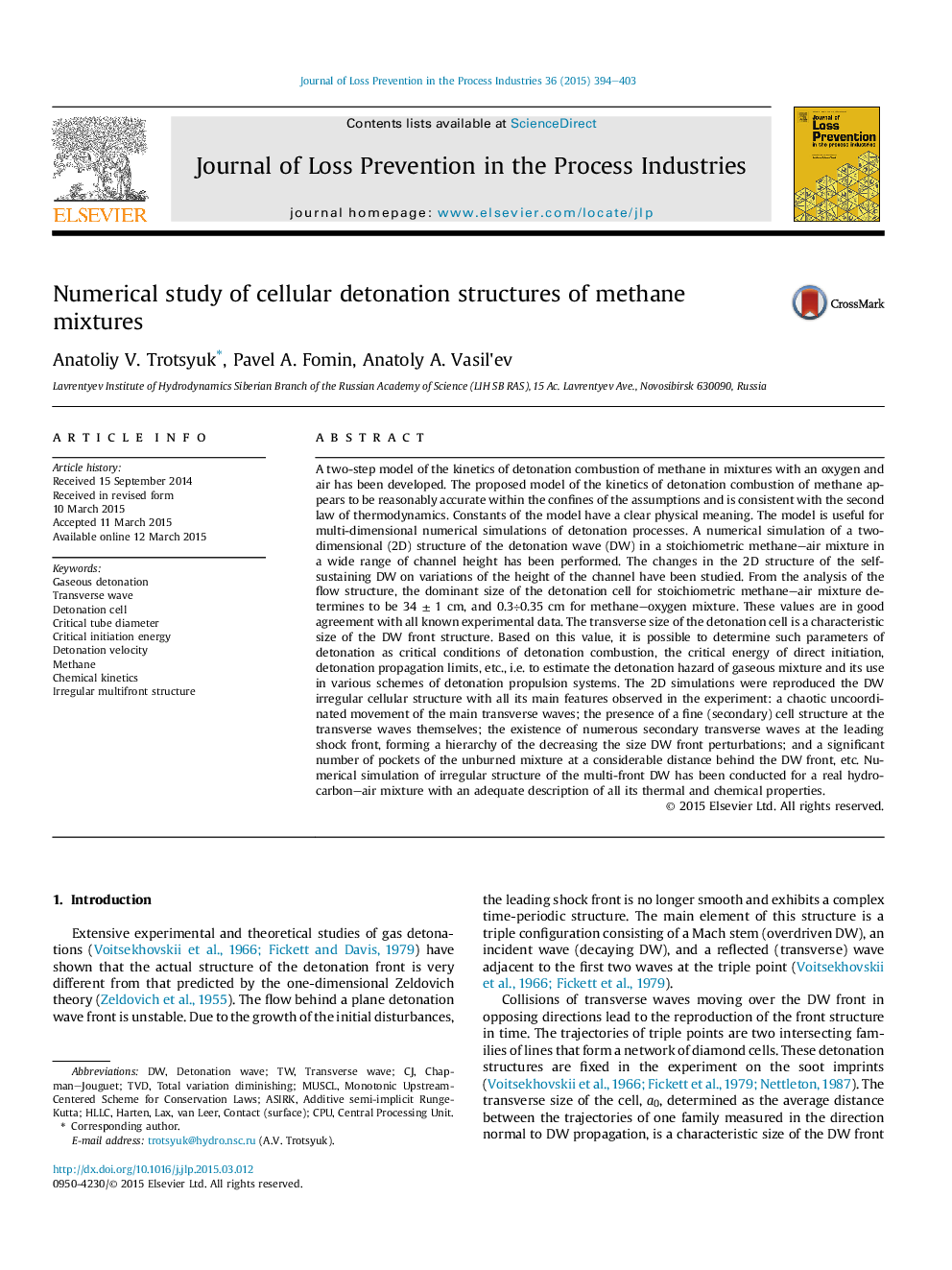| Article ID | Journal | Published Year | Pages | File Type |
|---|---|---|---|---|
| 6973225 | Journal of Loss Prevention in the Process Industries | 2015 | 10 Pages |
Abstract
A two-step model of the kinetics of detonation combustion of methane in mixtures with an oxygen and air has been developed. The proposed model of the kinetics of detonation combustion of methane appears to be reasonably accurate within the confines of the assumptions and is consistent with the second law of thermodynamics. Constants of the model have a clear physical meaning. The model is useful for multi-dimensional numerical simulations of detonation processes. A numerical simulation of a two-dimensional (2D) structure of the detonation wave (DW) in a stoichiometric methane-air mixture in a wide range of channel height has been performed. The changes in the 2D structure of the self-sustaining DW on variations of the height of the channel have been studied. From the analysis of the flow structure, the dominant size of the detonation cell for stoichiometric methane-air mixture determines to be 34 ± 1 cm, and 0.3÷0.35 cm for methane-oxygen mixture. These values are in good agreement with all known experimental data. The transverse size of the detonation cell is a characteristic size of the DW front structure. Based on this value, it is possible to determine such parameters of detonation as critical conditions of detonation combustion, the critical energy of direct initiation, detonation propagation limits, etc., i.e. to estimate the detonation hazard of gaseous mixture and its use in various schemes of detonation propulsion systems. The 2D simulations were reproduced the DW irregular cellular structure with all its main features observed in the experiment: a chaotic uncoordinated movement of the main transverse waves; the presence of a fine (secondary) cell structure at the transverse waves themselves; the existence of numerous secondary transverse waves at the leading shock front, forming a hierarchy of the decreasing the size DW front perturbations; and a significant number of pockets of the unburned mixture at a considerable distance behind the DW front, etc. Numerical simulation of irregular structure of the multi-front DW has been conducted for a real hydrocarbon-air mixture with an adequate description of all its thermal and chemical properties.
Keywords
Related Topics
Physical Sciences and Engineering
Chemical Engineering
Chemical Health and Safety
Authors
Anatoliy V. Trotsyuk, Pavel A. Fomin, Anatoly A. Vasil'ev,
